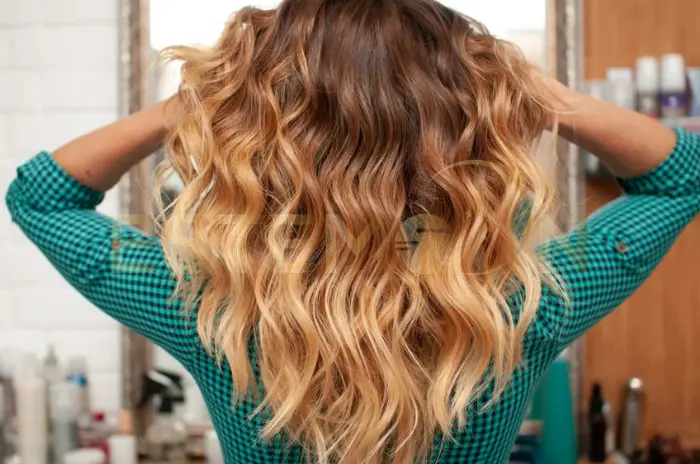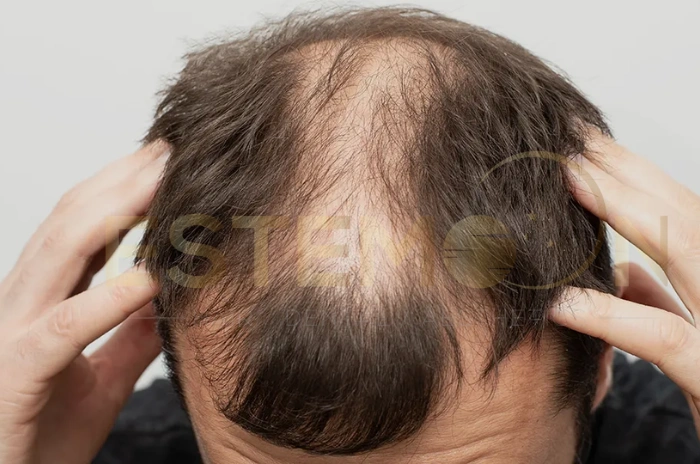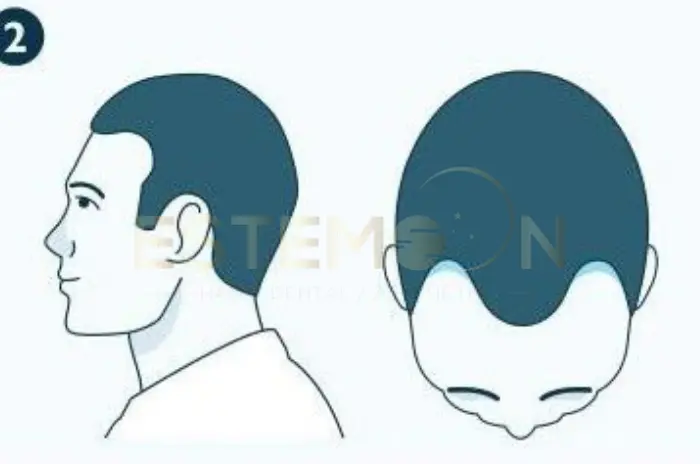Wavy hair possesses unique beauty and versatility, but requires specific care techniques to maintain natural texture, health, and shine. At Estemoon intermediary organization, we understand that wavy hair sits between straight and curly textures, presenting both opportunities and challenges for those seeking to enhance their natural waves.
Understanding your wavy hair type is the foundation of effective care. Wavy hair typically ranges from loose, gentle waves to more defined S-shaped patterns. This hair type tends to be more prone to frizz than straight hair but less fragile than tightly curled hair. The key to beautiful wavy hair lies in embracing its natural texture while providing the right balance of moisture, definition, and protection.

Wavy Hair Care Basics for Healthy Shine
Wavy hair requires delicate balance of moisture and protein to maintain health and natural shine. Unlike straight hair, which benefits from oils distributing easily along the hair shaft, wavy hair’s curved structure creates areas where moisture accumulates unevenly. This makes proper hydration techniques essential for achieving consistent shine.
Understanding porosity levels is crucial. Low porosity wavy hair repels moisture initially but retains it well once absorbed. High porosity wavy hair absorbs moisture quickly but loses it just as fast. Medium porosity hair accepts and retains moisture at moderate levels.
| Hair Porosity | Moisture Frequency | Protein Frequency | Recommended Products |
|---|---|---|---|
| Low Porosity | Daily light misting | Every 6-8 weeks | Lightweight oils |
| Medium Porosity | Every other day | Every 4-6 weeks | Balanced products |
| High Porosity | Daily heavy moisture | Every 2-4 weeks | Rich creams |
Achieving natural shine requires techniques that smooth the hair cuticle without disrupting wave patterns. Cold water rinses after washing help seal the cuticle, creating reflective surfaces that enhance shine. Apple cider vinegar rinses, used weekly, can improve shine by removing product buildup and balancing pH levels.
Silk or satin pillowcases reduce friction during sleep, preventing frizz and maintaining shine. Using microfiber towels or cotton t-shirts for drying minimizes roughening of the hair cuticle compared to traditional terry cloth towels.
Best Wash Routine for Wavy Hair
Developing optimal washing routine involves finding the right frequency, techniques, and products that enhance rather than disrupt your natural wave pattern. Over-washing strips natural oils and leads to increased frizz, while under-washing causes buildup that weighs down waves.
Most wavy hair types benefit from washing 2-3 times per week, though this varies based on scalp type, lifestyle, and product usage. Active individuals or those with oily scalps may need more frequent washing, while those with dry or chemically treated hair might extend time between washes.
Co-washing, or washing with conditioner only, can be beneficial for wavy hair between regular shampoo sessions. This technique cleanses gently while maintaining moisture levels. Use clarifying shampoos monthly to remove buildup from styling products and environmental pollutants.
| Wash Day Step | Technique | Product Type | Focus Area |
|---|---|---|---|
| Pre-wash | Gentle detangling | Detangling spray | Throughout hair |
| Cleansing | Scalp massage | Sulfate-free shampoo | Scalp primarily |
| Conditioning | Gentle distribution | Moisturizing conditioner | Mid-lengths to ends |
| Deep treatment | Weekly intensive | Protein or moisture mask | Damaged areas |
Sulfate-free shampoos work best for wavy hair as they cleanse without excessive stripping of natural oils. Look for moisturizing formulas containing ingredients like glycerin, aloe vera, or natural oils. Avoid products with drying alcohols listed in the first five ingredients.
How to Detangle Wavy Hair Without Breakage
Detangling wavy hair requires patience, proper tools, and techniques that work with your hair’s natural structure. Improper detangling is one of the leading causes of breakage and frizz in wavy hair, making this step crucial for maintaining healthy length and definition.
The best time to detangle wavy hair is when it’s saturated with water and conditioner, providing maximum slip and flexibility. Never attempt to detangle completely dry wavy hair, as this causes significant breakage and disrupts curl patterns. If you must detangle between wash days, lightly mist hair with water or leave-in conditioner first.
Starting detangling from the ends and working upward prevents pushing tangles down the hair shaft, which can create larger knots and increase breakage. This technique allows you to address smaller tangles before they become larger problems.
Wide-tooth combs are the gentlest option for wavy hair detangling. The widely spaced teeth glide through waves without catching or snagging. Wet brushes, specifically designed for use on damp hair, can also work well for wavy textures due to their flexible bristles.
Begin by sectioning hair into manageable portions, typically 4-6 sections depending on thickness and length. Apply generous amount of conditioner or detangling product to each section, ensuring complete saturation for optimal slip.
Start at the very ends of each section, gently working through small tangles with your chosen tool. Gradually work upward, addressing tangles as you encounter them rather than pulling through forcefully. If you meet significant resistance, add more product and work the tangle gently from multiple angles.
Protective styling before sleep significantly reduces tangle formation. Loose braids, silk scarves, or satin bonnets help maintain your wave pattern while preventing friction-induced tangles. Avoid sleeping with completely loose hair, which creates significant tangles overnight.
Essential Steps for a Perfect Wavy Hair Routine
Creating comprehensive wavy hair routine involves multiple steps that work together to enhance your natural texture, maintain health, and provide long-lasting definition. Well-structured routine adapts to your hair’s changing needs while consistently delivering results.
Morning routines for wavy hair should focus on refreshing overnight flattening and adding moisture where needed. Begin by assessing your hair’s condition – some days may require only light misting with water, while others might need leave-in conditioner or curl refresher products.
Scrunching techniques help reactivate waves that may have been flattened during sleep. Apply refreshing products to damp hands and gently scrunch upward, encouraging natural wave formation. Avoid overworking the hair, which leads to frizz and disrupted patterns.
Weekly routines should include deep conditioning treatments, clarifying washes, or protein treatments as needed. These intensive steps address cumulative damage and maintain optimal hair health for better wave formation and retention.
The order of product application significantly impacts final results. Generally, apply products from thinnest to thickest consistency, allowing each layer to absorb before adding the next. This prevents products from sitting on top of hair rather than penetrating effectively.
Leave-in conditioners should be applied first to damp hair, followed by styling creams or gels for hold and definition. Oils or serums come last to seal in moisture and add shine, used sparingly to avoid weighing down waves.
| Routine Component | Daily | Weekly | Monthly |
|---|---|---|---|
| Moisture application | Light refreshing | Deep conditioning | Intensive treatments |
| Cleansing | Refresh/co-wash | Clarifying wash | Scalp exfoliation |
| Styling | Pattern refresh | Full styling | Trim maintenance |

How to Choose the Right Products for Wavy Hair
Selecting appropriate products for wavy hair requires understanding your specific hair characteristics, including porosity, density, and curl pattern variation. The wrong products can weigh down waves, create buildup, or fail to provide adequate hold for definition maintenance.
Leave-in conditioners form the foundation of most wavy hair routines, providing essential moisture and detangling benefits. Choose lightweight formulas for fine hair or richer creams for coarse, thick hair. Water-based formulas generally work better for wavy hair than heavy, oil-based products.
Styling creams offer medium hold with moisture benefits, making them ideal for enhancing natural wave patterns without stiffness. These products typically contain humectants that help maintain hydration throughout the day while providing enough hold for definition.
Gels provide the strongest hold for wavy hair, helping maintain definition in challenging weather conditions. Modern gels often include moisturizing ingredients that prevent the crunchy feeling associated with older formulations. Look for alcohol-free options to avoid dryness.
Beneficial ingredients for wavy hair include glycerin for moisture retention, panthenol for strengthening, and natural oils for nourishment. Protein ingredients like hydrolyzed wheat or silk proteins can help strengthen damaged hair but should be balanced with moisture.
Avoid ingredients that can cause buildup or dryness, including sulfates, drying alcohols (denatured alcohol, isopropyl alcohol), and heavy waxes. These ingredients can disrupt wave patterns and require frequent clarifying.
When trying new products, introduce one at a time to identify which products work best for your hair. This approach helps you determine whether positive or negative results come from specific products rather than product combinations.
Heat Protection and Safe Temperature for Waves
Heat styling can enhance wavy hair when done correctly, but it also poses significant risks of damage and pattern disruption. Understanding safe heat practices and protection methods helps you achieve desired styles while maintaining hair health and natural wave integrity.
Wavy hair typically requires lower temperatures than straight hair for effective styling due to its more porous structure. Fine wavy hair should never exceed 300°F (150°C), while thicker, coarser waves can handle up to 350°F (175°C). Starting with lower temperatures and gradually increasing if needed prevents unnecessary damage.
Different styling tools require different temperature considerations. Blow dryers should use medium heat settings with constant movement to prevent concentrated heat damage. Flat irons and curling tools should be used sparingly and at the lowest effective temperature.
Heat protectant sprays create barriers between your hair and styling tools, reducing moisture loss and protein damage. Apply these products to damp hair before any heat styling, ensuring even distribution throughout all sections you plan to style.
| Heat Tool | Safe Temperature | Frequency Limit | Protection Required |
|---|---|---|---|
| Blow dryer | Medium setting | 2-3 times/week | Heat protectant spray |
| Curling iron | 300-350°F max | Once weekly | Thermal protection |
| Flat iron | 250-300°F max | Occasional use | Heavy protection |
Plopping, or wrapping wet hair in a cotton t-shirt, enhances natural waves without heat damage. This technique removes excess water while encouraging curl formation through gentle compression. Braiding damp hair creates heat-free waves with varying patterns depending on braid size and number.
Brushing and Combing Tips for Wavy Hair
Proper brushing and combing techniques for wavy hair differ significantly from those used for straight hair. The goal is to maintain wave definition while preventing frizz, breakage, and pattern disruption that can result from inappropriate tool use or timing.
The golden rule for wavy hair is to avoid brushing when completely dry, as this disrupts curl patterns and creates frizz. Instead, limit brushing to when hair is wet and loaded with conditioner during wash day, or when hair is damp with leave-in products.
Between wash days, finger-combing or very gentle scrunching with damp hands helps refresh waves without causing frizz. If you must address tangles between washes, lightly mist the area with water or leave-in conditioner first.
Wide-tooth combs work best for wavy hair as they glide through waves without catching or disrupting patterns. The spacing between teeth should be wide enough to accommodate your wave pattern without forcing hair straight.
When combing or brushing wavy hair, always start from the ends and work upward to prevent pushing tangles down the hair shaft. This approach minimizes breakage and makes the detangling process more efficient.
After any brushing or combing, waves often need encouragement to reform properly. Gentle scrunching with damp hands helps reactivate curl patterns that may have been temporarily disrupted during detangling.
FAQ
What is the proper wash routine for wavy hair?
The proper wash routine for wavy hair involves washing 2-3 times per week with sulfate-free shampoo, focusing cleansing on the scalp rather than the lengths. Apply conditioner from mid-lengths to ends, detangle gently with wide-tooth combs while conditioner provides slip, and finish with cool water to seal the cuticle. Between regular washes, co-washing with conditioner can provide gentle cleansing while maintaining moisture.
How should I detangle my wavy hair safely?
Detangle wavy hair only when it’s wet and saturated with conditioner or detangling products to provide maximum slip and prevent breakage. Always start from the ends and work upward using wide-tooth combs or wet brushes designed for damp hair. Section hair into manageable portions and work through each section gradually, adding more product if you encounter resistance.
What are the best products for wavy hair?
The best products for wavy hair include lightweight, water-based leave-in conditioners for daily moisture, sulfate-free shampoos for gentle cleansing, and styling creams or gels that provide hold without weighing down waves. Look for products containing glycerin, aloe vera, and natural oils while avoiding sulfates, drying alcohols, and heavy waxes.
Should you brush wavy hair when it’s dry?
No, you should never brush wavy hair when it’s completely dry, as this disrupts curl patterns, creates frizz, and can cause breakage. Limit brushing to wash days when hair is wet and loaded with conditioner, or when hair is damp with leave-in products. Between wash days, use finger-combing or gentle scrunching with damp hands to refresh waves.
Follow us on social media for updates, tips, and patient success stories:




